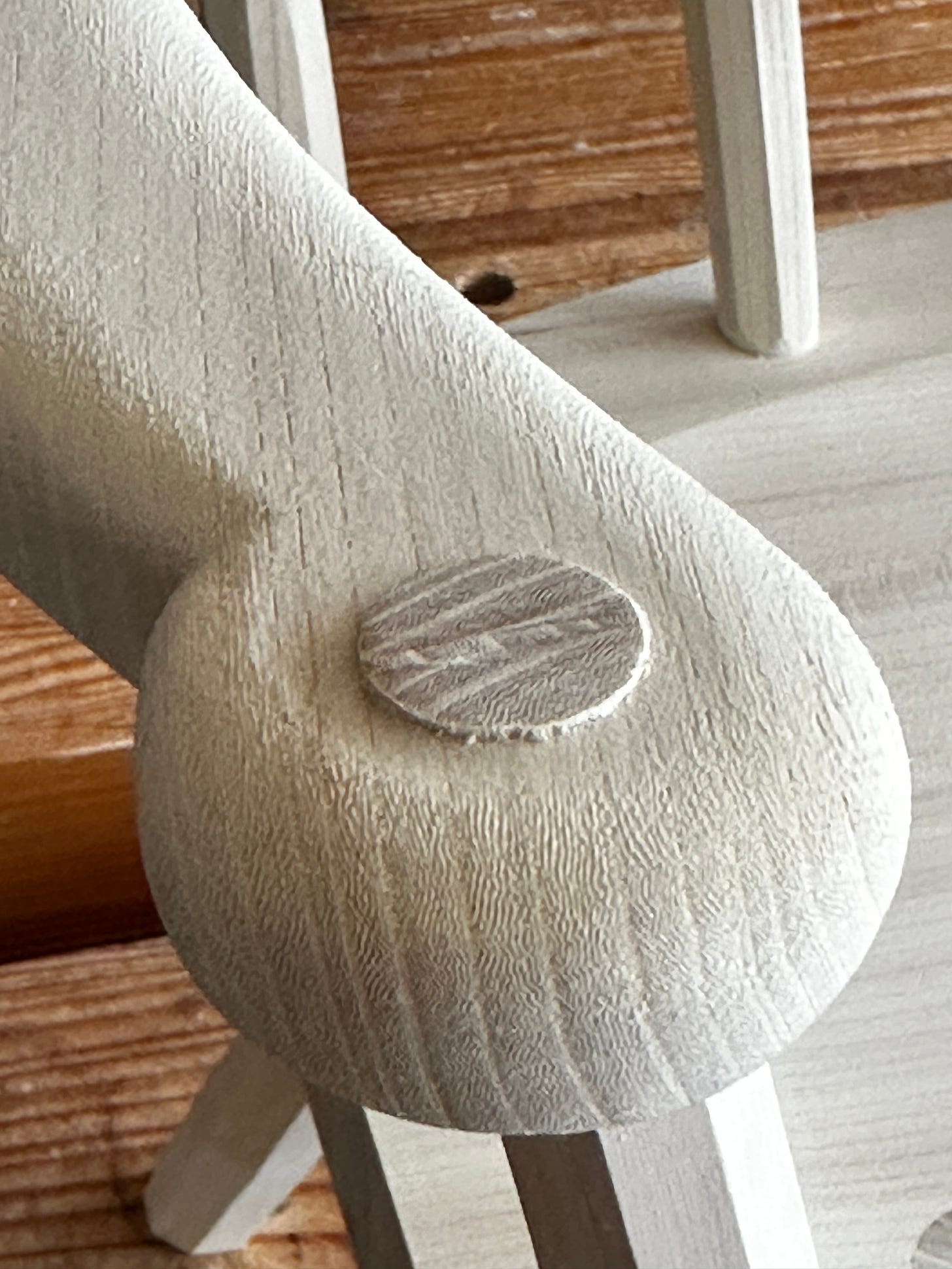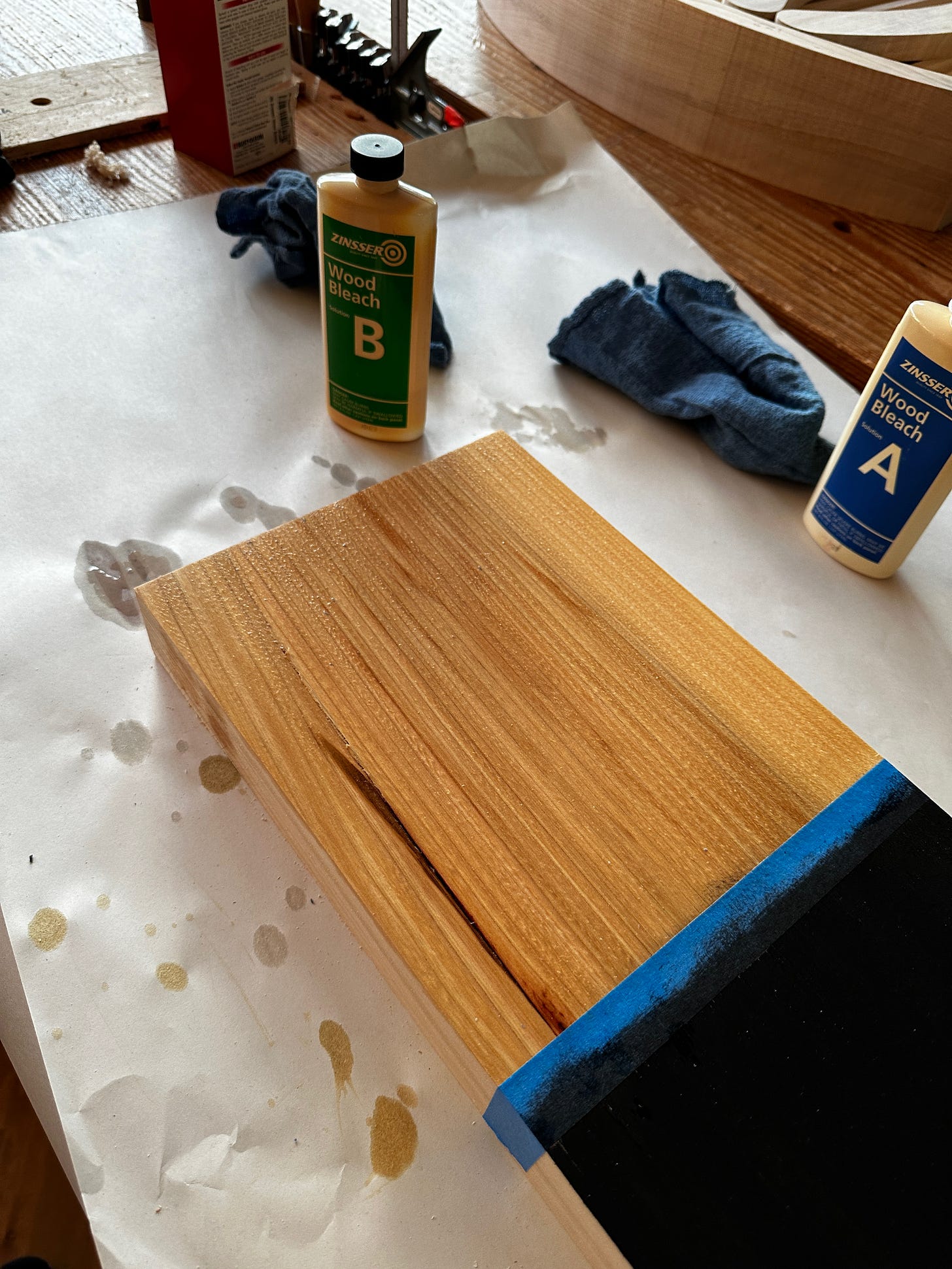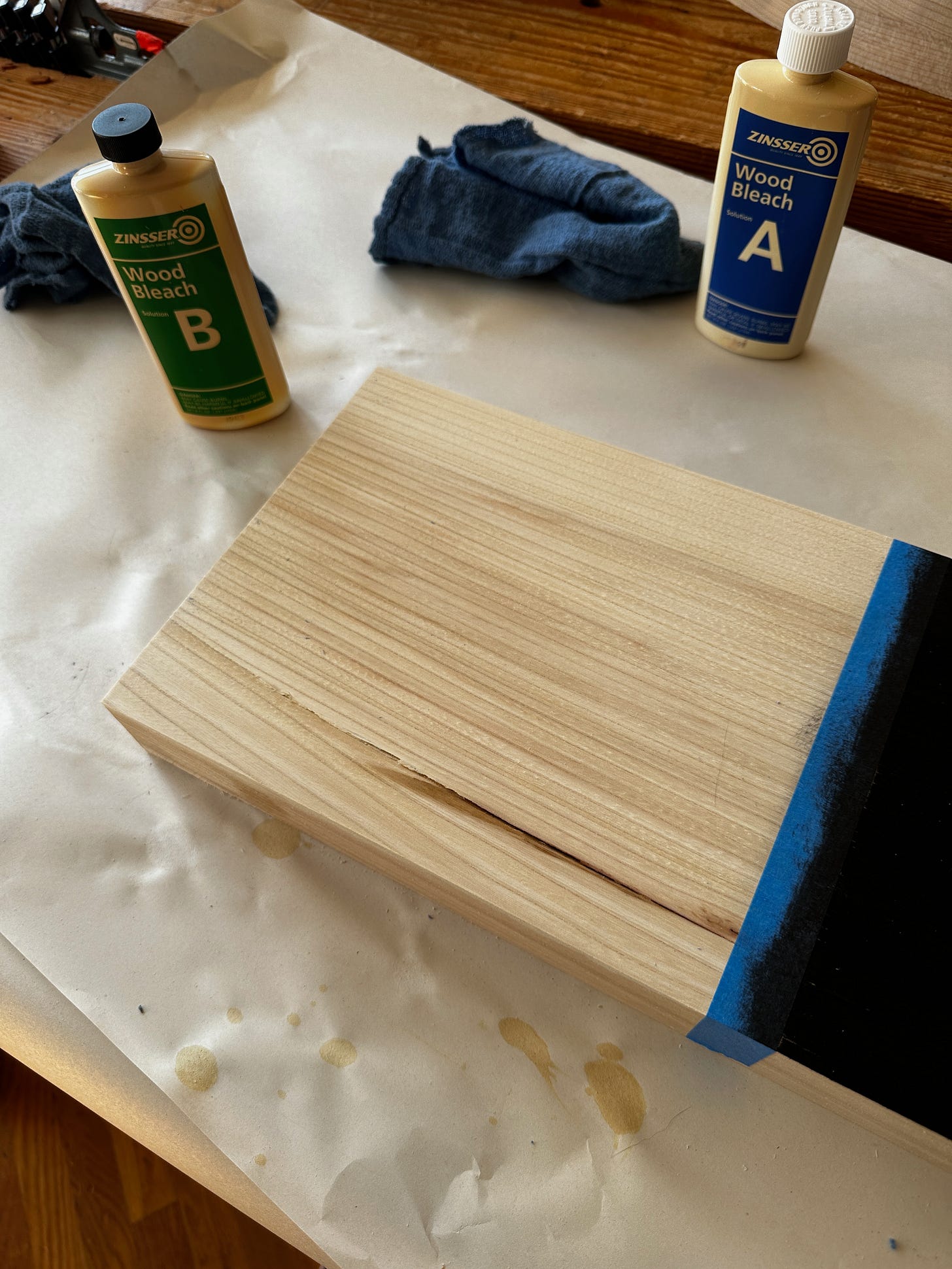
Years ago, a furniture customer asked me to build him a pair of comb-back stick chairs – one in Gaboon ebony and a second in bleached holly. His plan was to use them at his Go table.
I declined the commission for a couple reasons. I didn’t want to build a stick chair in ebony because the stuff is overharvested and scarce. And I wasn’t sure I could get holly in chair-sized chunks that were strong enough.
But the idea of a black and a white stick chair has stuck in my craw ever since. And I’ve experimented with several techniques, including dyes and bleaches and other chemicals. This blog entry is basically where I’ve ended up. I am happy with my sample boards and have started to build an Irish stick chair that will be bone white.
Then, when I return from the U.K. in November, I’ll build a comb-back chair in black.
White: Wood Bleach & Liming Wax
I’ve used wood bleach a lot during the last couple decades. It’s not the bleach you use on your clothes. Instead, it’s a two-part solution (a bit nasty, to be honest, but at least it’s not rated an “eco toxin”). But the stuff works so well that I have yet to find anything else that matches it.
I used the Zinsser product.1 It’s a two-part treatment. The first part is sodium hydroxide (lye). Follow the safety instructions. Wet the surface with the first part. Wait 5-10 minutes, then apply the second part (hydrogen peroxide).
Keep reading with a 7-day free trial
Subscribe to The American Peasant to keep reading this post and get 7 days of free access to the full post archives.





